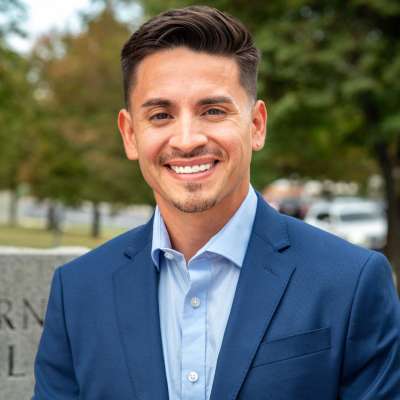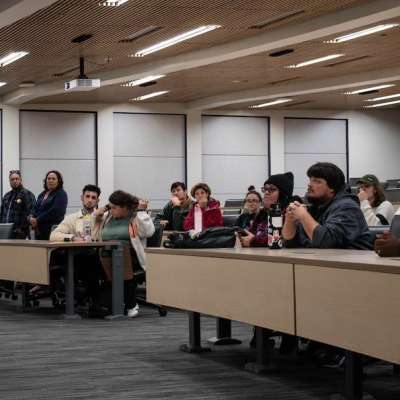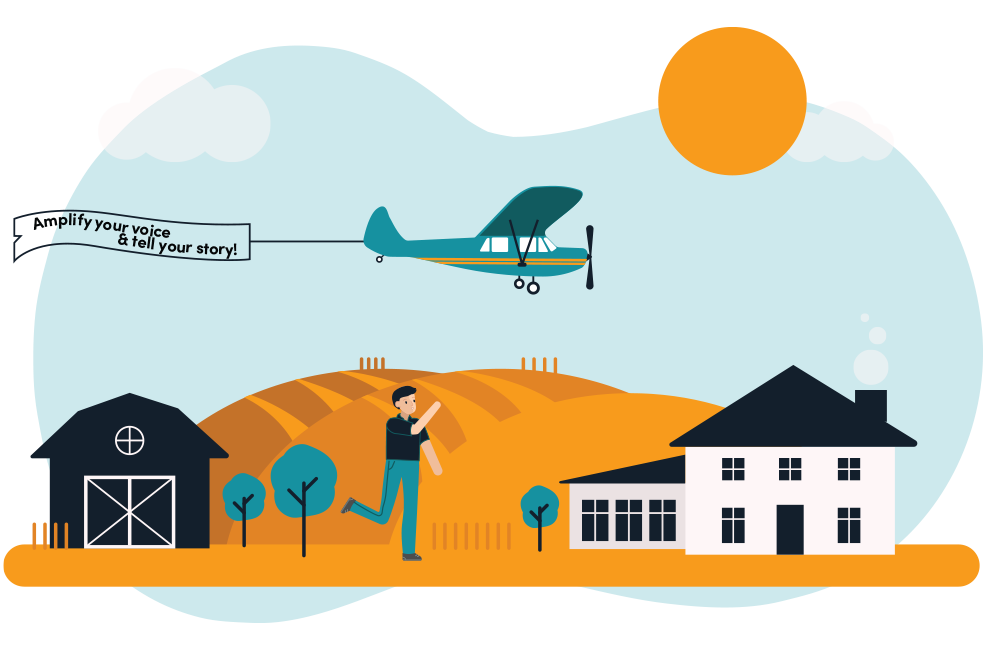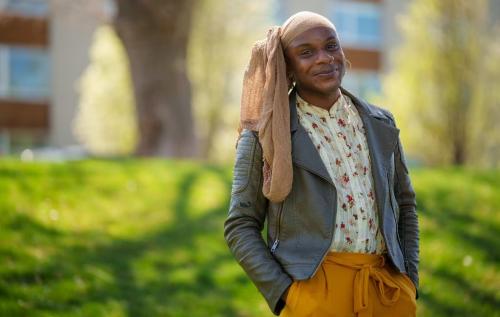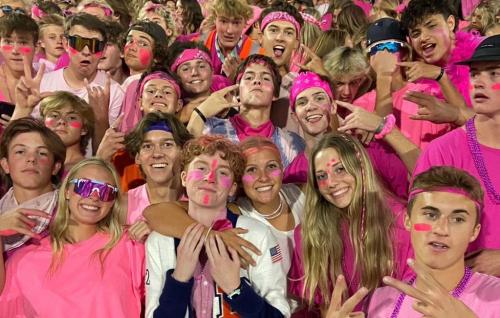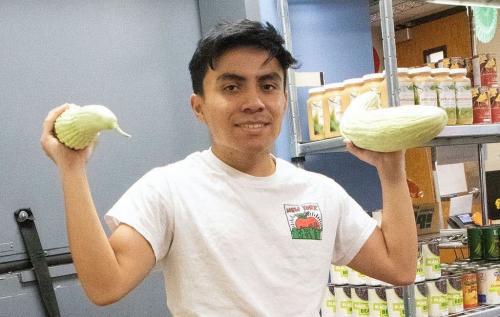Queer students in Utah’s middle and high schools say they feel left out of the standard health and human development discussions, arguing that what students learn about their bodies and sexuality is not adequate or inclusive.
“Whether you agree with homosexuality or transsexuality or not, it does not negate the fact that you should be educated on it,” said Ellie Uber, 17, a Brighton High School senior who came out as a lesbian two years ago. “It is a school setting where we have the right to learn.”
Students are taught human development as early as kindergarten, and the curriculum evolves as students get older, according to the Utah Core State Standards for Health Education. For example, fifth-grade students, with parental notification and consent, learn about puberty and maturation.
The curriculum must “describe the basic structures of the reproductive and endocrine systems and identify their respective functions” and portray how the body changes and prepares for reproduction.
In middle school, students again learn about physical maturation, and go deeper into the social, cognitive and emotional changes of adolescence.
At middle and high school levels, students are taught to “recognize and respect individual differences in attraction, growth and self-identity,” according to the standards.
In Utah high schools, students are introduced to sexual education. The core standards state the curriculum must provide an “abstinence-based” approach to sexual and reproductive health education.
Feeling ‘awkward’ and isolated
Uber said she experienced insecurity in her human development courses.
“It becomes awkward when you’re younger, and all the other kids your age are learning about what their sexuality means, and you’re like ‘I don’t know anything about myself or what my sexuality entails,’ “ she said, recalling the isolation she felt in sex education. “[There was] a definite lack of acknowledgment. There’s no education for queerness.”
As a student body officer and spirit leader at Brighton, Uber focused her campaign on inclusivity.
Uber said she has aimed to be a resource for both queer and straight students, by answering questions from her peers and helping to comfort those who are questioning, confused or just curious.
She said some students are hesitant to learn about their sexuality because they might feel the need to identify with one term immediately, whether that is gay, lesbian, trans, straight or something else.
“There’s no talk about how, even though there are a variety of labels under queerness, you don’t have to pick one,” she said.
If none feel right, she observed, students may begin to repress their sexuality out of confusion and feelings of insecurity.
“Without any resources or people to turn to, you start to push it down, and that is mentally exhausting,” said Uber. “I would know. It pushes a lot of kids to the edge, because there is no escape from your thoughts.”
According to the Children’s Hospital of Montefiore, a nationally ranked pediatric teaching hospital in New York City, same-sex crushes are common during the teen years. Teens may experiment with someone of the same gender during adolescence, but that does not necessarily mean those feelings will last. Some of those attractions fade, and some only get stronger.
“You don’t have to know right now, it’s an ever-changing and fluid thing,” Uber said, explaining she wants to see that information relayed in school health courses. “That is something that a lot of kids don’t understand.”
Canyons School District spokesperson Jeff Haney said Utah schools, including Brighton, are bound by state laws around health education, including discussion of identity and sexuality. He encouraged students to read the law and district policies if they want to know more about what topics can — and cannot — be covered in their health classes.
“Students ... are urged to engage in dialogues with their parents and guardians if they have questions or would like guidance in finding information from community organizations,” Haney said.
Getting involved with activities like the Gay Lesbian and Straight Education Network, which is offered as an extracurricular club at Brighton, is also an option, Haney said.
A need to cover ‘all their bases’
Lillie McDonough, a 17-year-old senior at Highland High School and trans woman, began transitioning during her sophomore year, and found human development confusing. She recalled feeling the education was lacking as early as the fifth-grade maturation program.
“I left the room after and thought, ‘I wish I could have been in the other one,’” she said.
Utah’s maturation program teaches male and female anatomy, reproductive systems and the general physiology of male and female development, according to the Salt Lake City School District.
“They divided us into men and women,” McDonough said. “My thoughts after that were, ‘I wish you got to pick your gender, so I didn’t have to be stuck with this,’ but they never covered that. So, I kind of just had to sit with that [thought].”
McDonough said the course did not mention intersex individuals. Although that information may not apply to most students, she still wishes it had been included in her human development courses.
“They don’t cover at all how it works for trans people, with hormone blockers and reverse hormone therapy,” she said.
McDonough says she wishes she was taught the basics of LGBTQ+ health such as defining different sexual preferences, saying schools should “teach it along with all of the other [topics] and cover all of their bases.”
Gender identity and sexuality media in schools
In the Canyons School District, a conservative group of parents has targeted an emotional health program known as Second Step, and books available in the school libraries. Although intended to help students make responsible choices and build positive relationships by understanding their emotions, links were found in the Second Step program that led to other sites about sexuality and dating, generating concern from parents and the removal of the program from the curriculum.
The district, which includes schools in Sandy and the south Salt Lake valley, is now re-examining its policies on library books, after the group of parents began sending in concerns over the content of some of the books available in the district’s libraries.
Canyons School Board held a Nov. 30 meeting, where students, parents and faculty discussed the decision to remove nine books from school libraries following complaints over inappropriate content. On the list of banned books is “Gender Queer” by Maia Kobabe and “Beyond Magenta” by Susan Kuklin, which center around queer and transgender stories and characters. Controversial literary classics, such as Toni Morrison’s “The Bluest Eye” and Vladimir Nabokov’s “Lolita,” also were on the list.
Connie Slaughter, who encourages parents to read books from their children’s school libraries to note inappropriate content, told board members she supported the removal of the books — saying the content is sexually explicit, includes “filthy” language and is violent.
“I’m nervous about what’s going on,” Slaughter said, mentioning she has grandchildren attending school in the district. “I want them to go to school and not be wondering if they are learning something I don't want them to learn, and I know [their mother] feels the same way.”
Slaughter said the content is divisive and not suitable for adolescents, and that institutions of education, librarians and faculty members should not “continue to push divisive and destructive ideologies and personal agendas.”
She added that “as parents, we really should have a say in what's in our libraries.”
As The Tribune reported in November, librarians and civil rights attorneys have argued that the argument is about limiting what viewpoints — particularly ones from historically marginalized groups — that students can seek out on their own with a library card. None of the titles, they note, are required reading.
Richard Price, an associate professor of political science at Weber State who tracks censorship in school districts, told The Tribune in November: “If you don’t want to look at it, then you don’t have to check it out. But I fear what this group is trying to do is forbid all people from reading them. They’re trying to parent for all parents.”
The district, Haney said, is meant to be a welcoming learning environment for all of its students. “Canyons District’s nondiscrimination policy clearly and specifically prohibits unlawful discrimination or harassment of students on their basis of gender, gender identify and sexual orientation,” he said.
‘Removing the fear’ of being queer
Censorship debates over gender and sexuality, like the one in Canyons School District, contribute to the lack of inclusive education for trans and queer students, said Peter Moosman, coordinator at Salt Lake Community College’s Gender and Sexuality Student Resource Center.
Schools and institutes of education have a “responsibility to incorporate all lived experiences and histories into their curriculum,” he said.
“The queer experience is a lot more visible now than it ever has been, but in hyper-conservative communities, [the experience] is still very lonely and isolating,” he said. “If these things are incorporated into education, it’s mental health care and it’s suicide prevention.”
LGBTQ youth are at a higher risk for negative health and life outcomes than their heterosexual and cisgender counterparts, according to the Centers for Disease Control and Prevention. About a third are bullied at school, the CDC reported in its most recent Youth Behavior Risk Survey, and 47% have seriously considered suicide.
Moosman said some of this loneliness and isolation comes from avoiding LGBTQ topics in schools, and that talking about queerness, from sex to mental health issues, in a classroom setting can create a more supportive environment.
“The more we’re talking about [queerness] and creating visibility and representation around it in our education and otherwise, it destigmatizes [the experience] by removing that fear,” he said.
Moosman wants to see changes in Utah’s education system, beyond incorporating queer sexual and reproductive health in the curriculum. He said he hopes for inclusion in history courses, and wants to see schools put “a concerted effort in hiring queer [faculty], so queer youth can see adults and leaders that are queer doing great things.”
Learning about queer existence, Moosman said, is important for students of all sexualities and gender identities, and people of all ages. Providing more accessible queer education in schools, he said, will help people develop a better understanding of the people around them.
Alexie Zollinger wrote this story as a journalism student at Salt Lake Community College. It is published as part of a collaborative including nonprofits Amplify Utah and The Salt Lake Tribune.
###
NOTE TO MEDIA PARTNERS PUBLISHING WORKWe also request organizations include the following text either at the beginning or end of the story text:
This story is jointly published by nonprofits Amplify Utah and [Your Media Organization's Name] to elevate diverse perspectives in local media through emerging journalism. Alexie Zollinger wrote this story as a journalism student at Salt Lake Community College. For more stories from Amplify Utah, visit amplifyutah.org/use-our-work.








